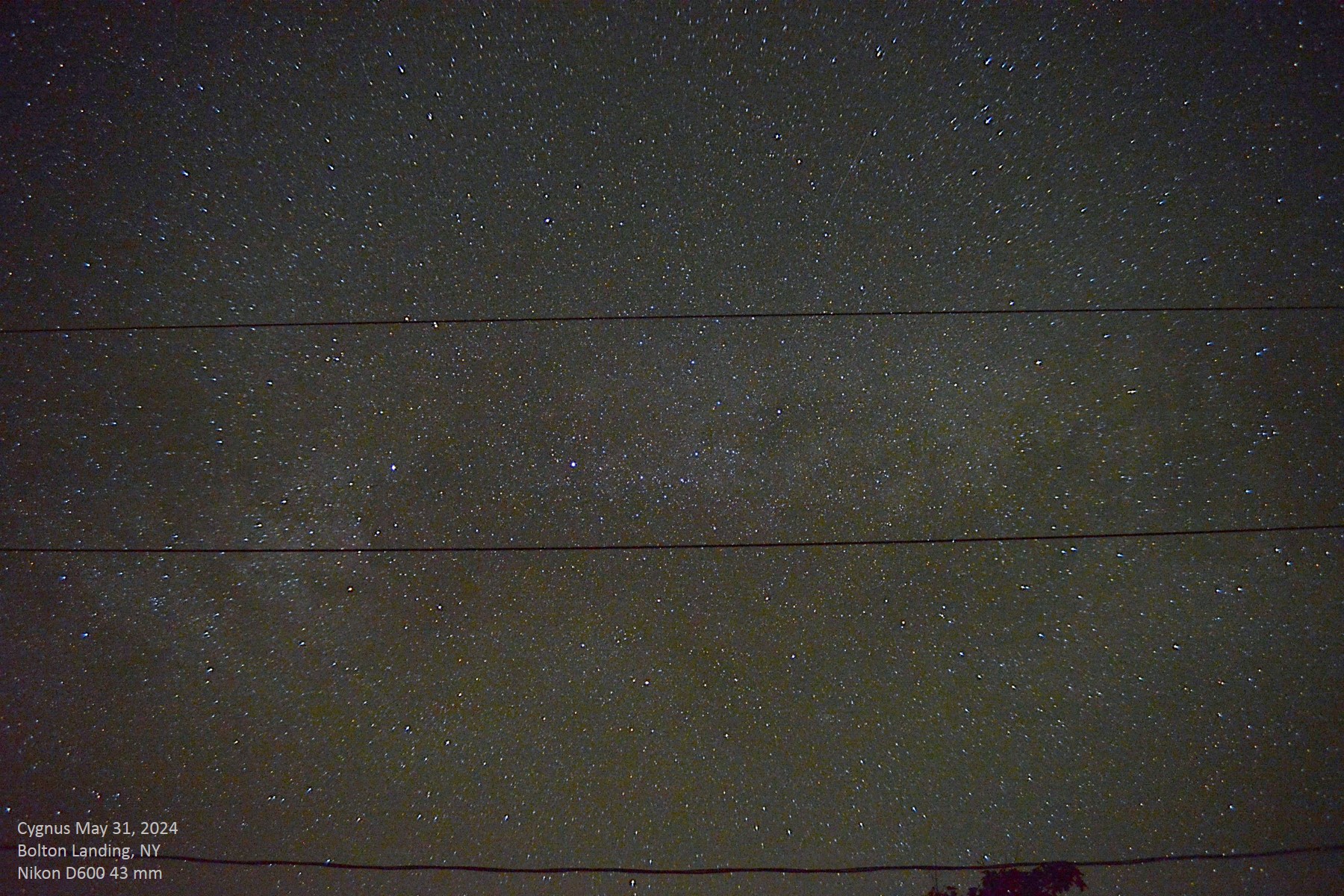 |
I visited my lady friend Laura at the end of May 2024 and since the first
night was clear and moonless, I took a few snapshots of her night sky just to see
what it looks like from 43°46' North latitude.
|
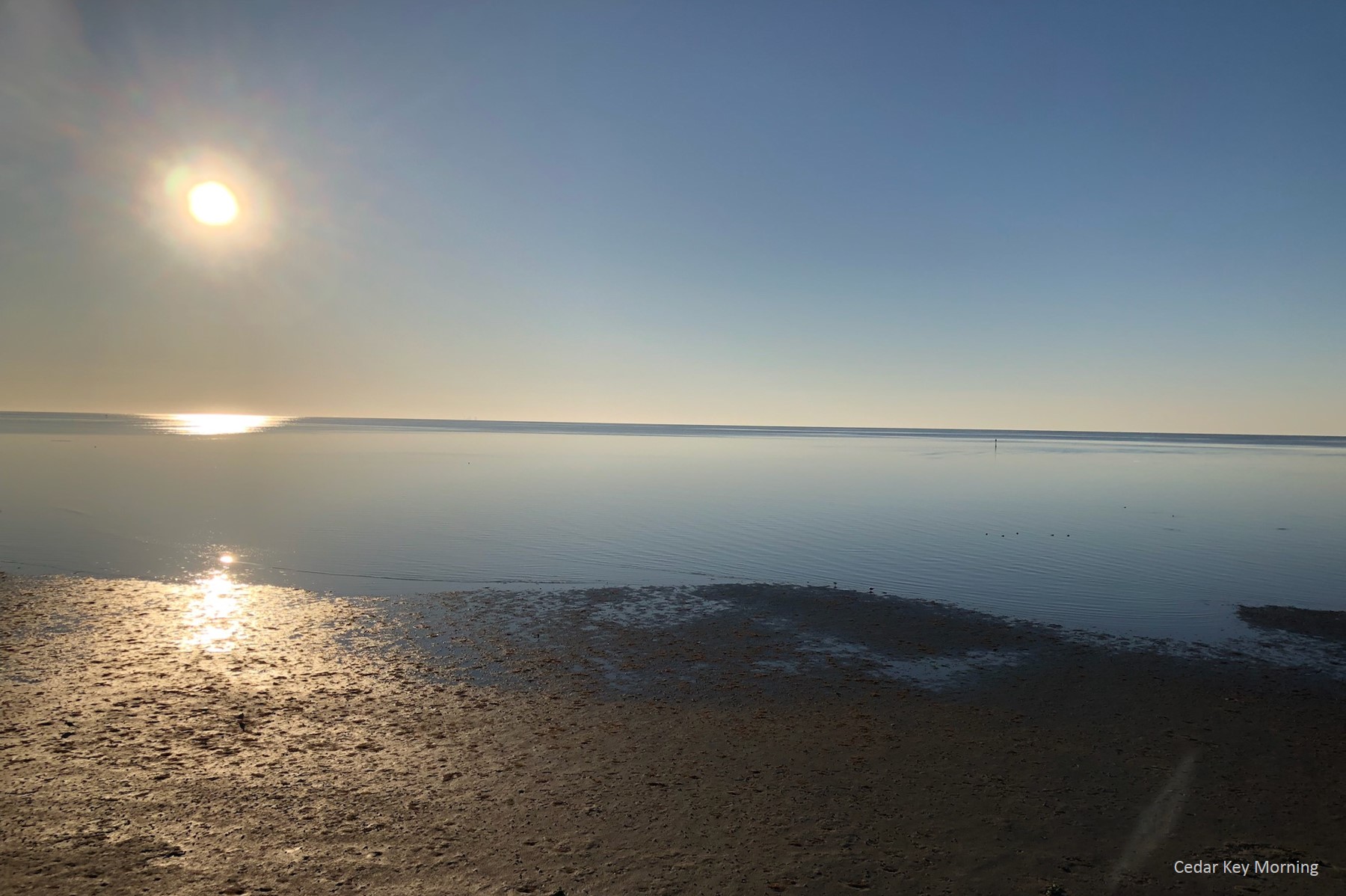 |
In February 2024 we spent a week in Cedar Key, Florida
and from our apartment balcony looking out over the shallow waters around the Keys,
I took some pictures of the later winter and early spring constellations that we
can't see very well from Virginia.
|
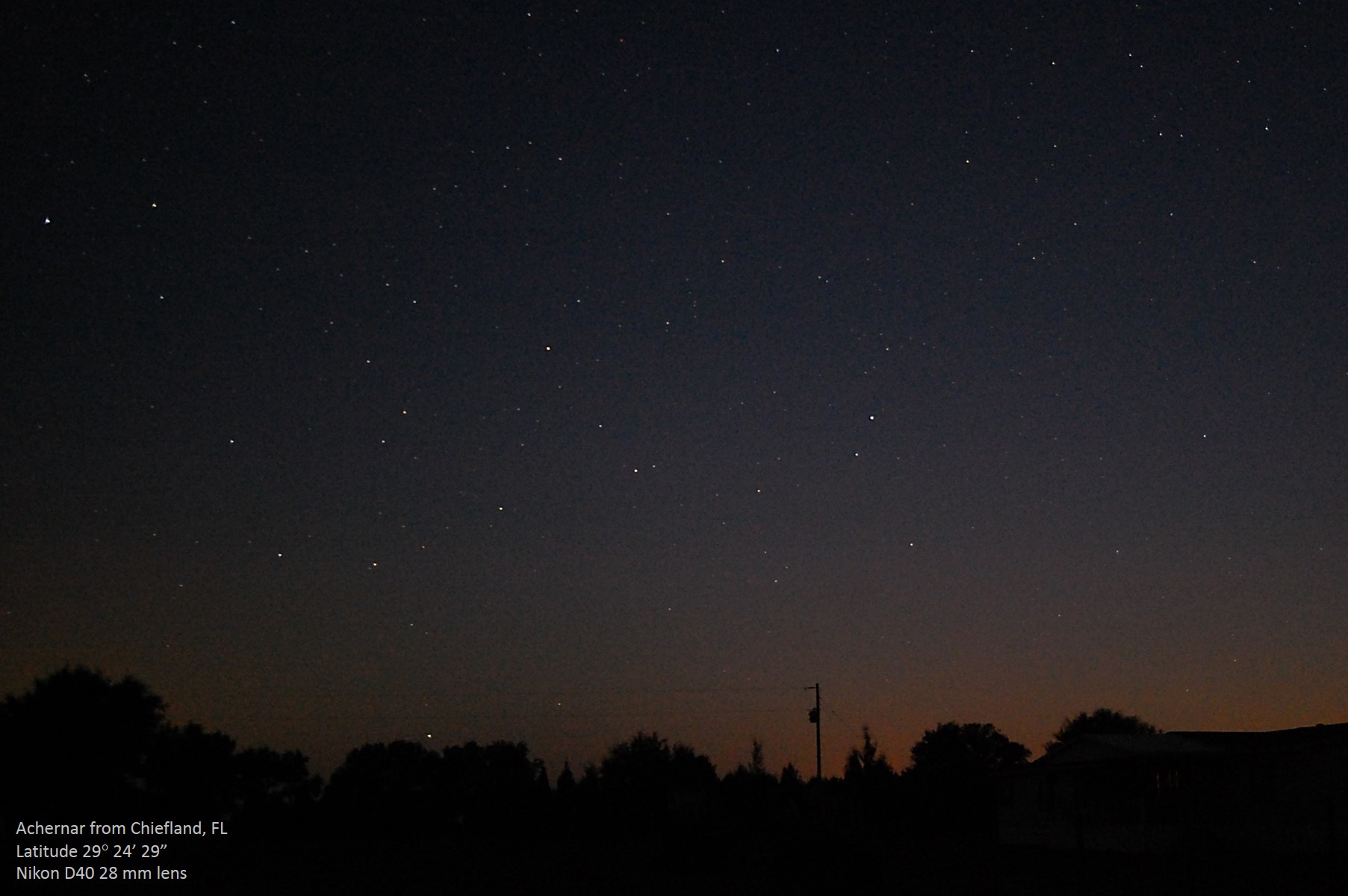 |
I don't recall when I took this picture but it must have been sometime in the
2010 - 2012 timeframe during one of our trips to Florida. A rare view of the
great southern star Achernar, the ninth brightest star, slightly dimmer
than Procyon but slightly brighter than the average magnitude of Betelgeuse.
|
 |
On this evening of October 8, 2020, I took a shot of the three large
open clusters in the Ophiuchus-Serpens area, between β Ophiuchi and
the great double star Alya, or θ Serpentis. These clusters
are best observed a low power or even with big binoculars. They look
great in a small refractor!
|
 |
On this evening of March 29, 2020, the 4-day old Moon was out and so the
sky was kind of bright for getting a constellation snapshot, but I took one
anyway of the Double Cluster in Perseus; the field included an object that
I've read about but never observed with binoculars or telescope, the large
open cluster Stock 2, named after Jürgen
Stock, the German astronomer who was the driving force behind the establishment
of observatories in Chile, and who served as the first director of the Cerro Tololo
Interamerican Observatory.
|
 |
This field in Ursa Major was captured in a remote dark location in eastern
North Carolina, on the Pamlico Sound. I didn't get it centered on M81 and
M82, even with just a 2 minute exposure was able to capture a few additional
galaxies, some of which are on the Herschel
400 list.
|
 |
On the last night of 2019, December 31, I got a few images of the winter
sky. Here is Canis Major and northern Puppis, on which I've annotated
some of the larger open clusters along the winter Milky Way. The Collinder
clusters stand out better because they are so large and sprawling, but they get
lost easily when you pan over them with a telescope.
|
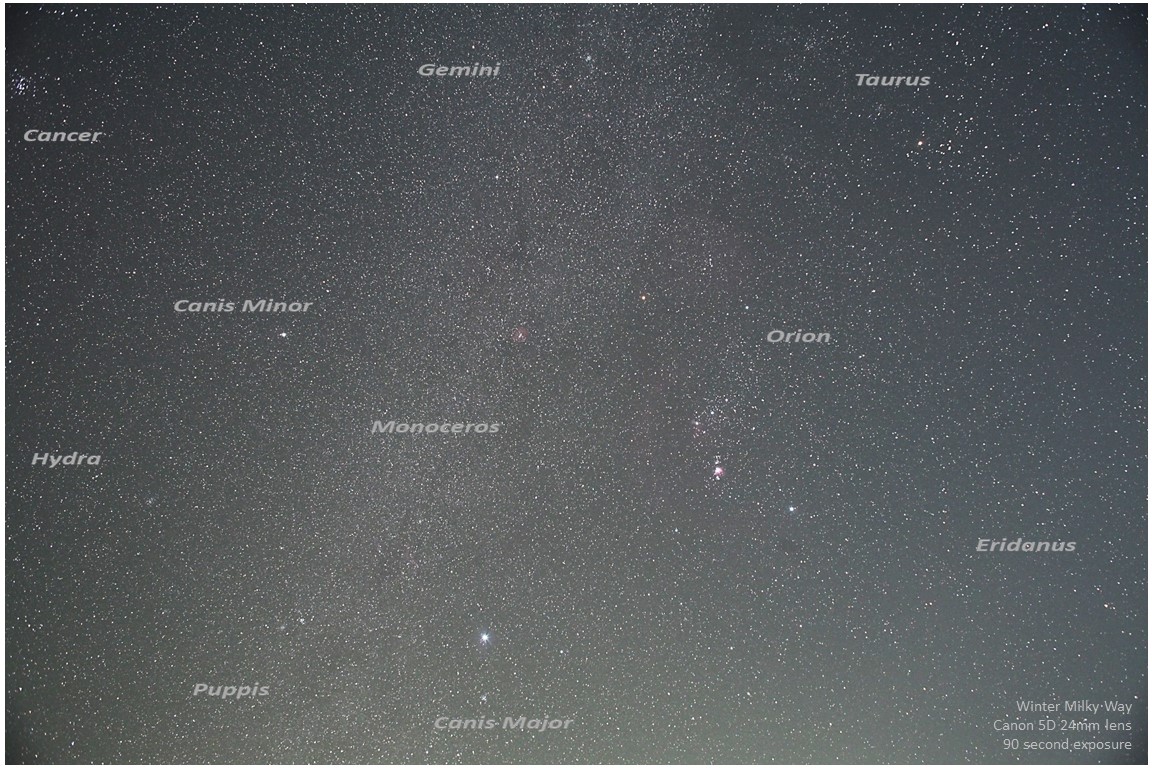 |
On the last night of 2019, December 31, I got a few images of the winter
sky. This is the first time I've managed to capture the breadth of the
main part of the winter Milky Way that shows a little bit of the star clouds
and darker patches through Gemini, Monoceros, and Puppis. The nebulas
and clusters that stand out in this image, besides the Orion Nebula, are the
Rosette, M48 in Hydra, M35 in Gemini, M44 up at the extreme upper left, the
twin clusters in Puppis, M46 and M47, and M41 in Canis Major.
|
 |
This image of Orion with a 50mm lens shows the major nebulas and clusters,
as well as the current brightness
of Betelgeuse relative to Rigel and other stars. It is currently at
an historic low in brightness, prompting speculation about the star's near-term
evolution. The Rosette Nebula shows faintly in this image to the upper
middle left.
|
 |
A quick shot of Leo rising over the treeline to my east ~ no nebulas visible
here!
|
 |
Here is my first attempt at prime focus imaging of a deep sky object,
of course what else would it be but M42? There is some trailing and
the stars could be focused better but not bad for my first attempt.
Orion was still pretty low in the sky so the circumstances were not the
best. This image was taken in the early evening on December 25, 2019.
|
 |
The area around Alnitak, or ζ Orionis, is shown in this image,
taken later in the evening than the above image of M42, so it was higher
in the sky. I darkened and increased the contrast of the original
image to arrive at this one. It was acquired in the late evening
on December 25, 2019. The vignetting around the edges only appears
worse in this image because I didn't crop it down first!
|
 |
The Pleiades at 90 seconds with my Canon 5D mkII (modified). The
trailing doesn't appear too bad at this exposure but it's long enough to
pick up the nebulosity around Merope. The focus is not the best, so
I will have to make some adjustments the next time out. This image
was acquired in the early evening on December 25, 2019.
|
 |
I didn't think that using my 600 mm focal length achromat with my full
frame Canon would result in too narrow a field of view to capture the full
extent of the California Nebula, but it obviously is, or I should have
reoriented the camera 90 degrees to get the full length. The exposure
was 90 seconds and the star trailing is barely noticeable. This image
was acquired in the early evening on December 25, 2019.
|
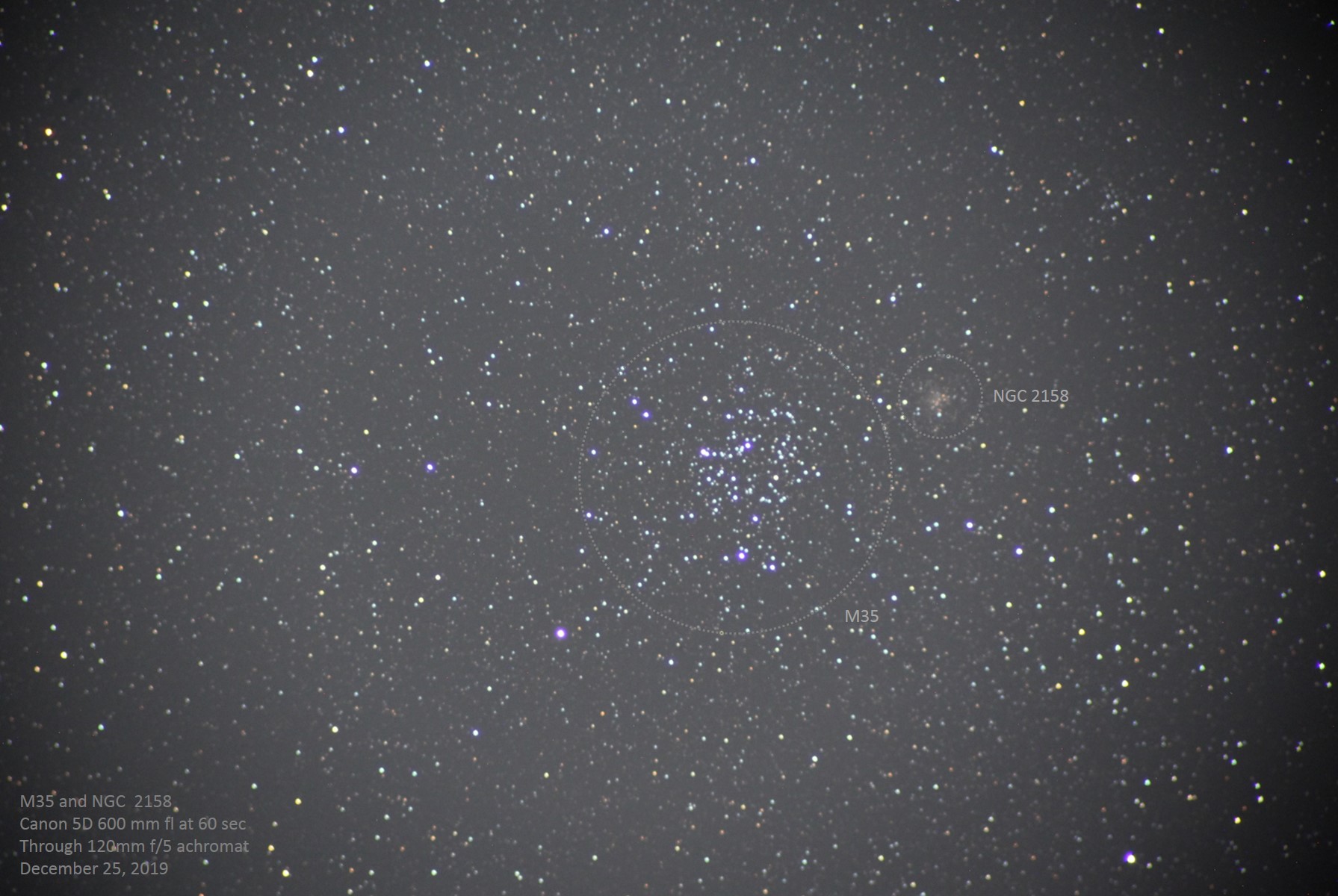 |
This is a 60 second image of M35 and its smaller neighbor, NGC 2158 (to
the right of the main cluster). At
only 60 seconds, the stars don't appear to be as trailed as in some of the other
images I took this evening. I cropped this image some, so the image scale is
not quite accurate compared to the other images. This image
was acquired in the late evening on December 25, 2019.
|
 |
I always thought the grouping of stars around Alpha Persei (Mirfak)
was an "association", but this evening, after looking at my image of the
group, I see that Wikipedia
refers to it as a cluster; when did this change occur? I recall
reading a long time ago that the grouping was part of the Melotte catalog,
but I didn't know that it was also in Per Collinder's catalog, so on my
image, I decided to label it Collinder 39. The grouping has always
been notable to me for the multiple smoothly curving arcs of stars.
This image was taken just after midnight on December 25, 2019.
|
 |
It's winter time so what else should I try to image but the Orion Nebula?
I am just in my driveway less then 10 miles from Fredericksburg, so the
light pollution here is still pretty bad, but looking straight up or south is
tolerable. The Celestron 8 on which I piggybacked the camera tracked well
for these two minutes lol. Note that the camera I used, my Canon 5D mkII,
was modified for Hydrogen-α, so it's much more sensitive in the red end
of the spectrum. This image was taken just before midnight on December 24,
2019.
|
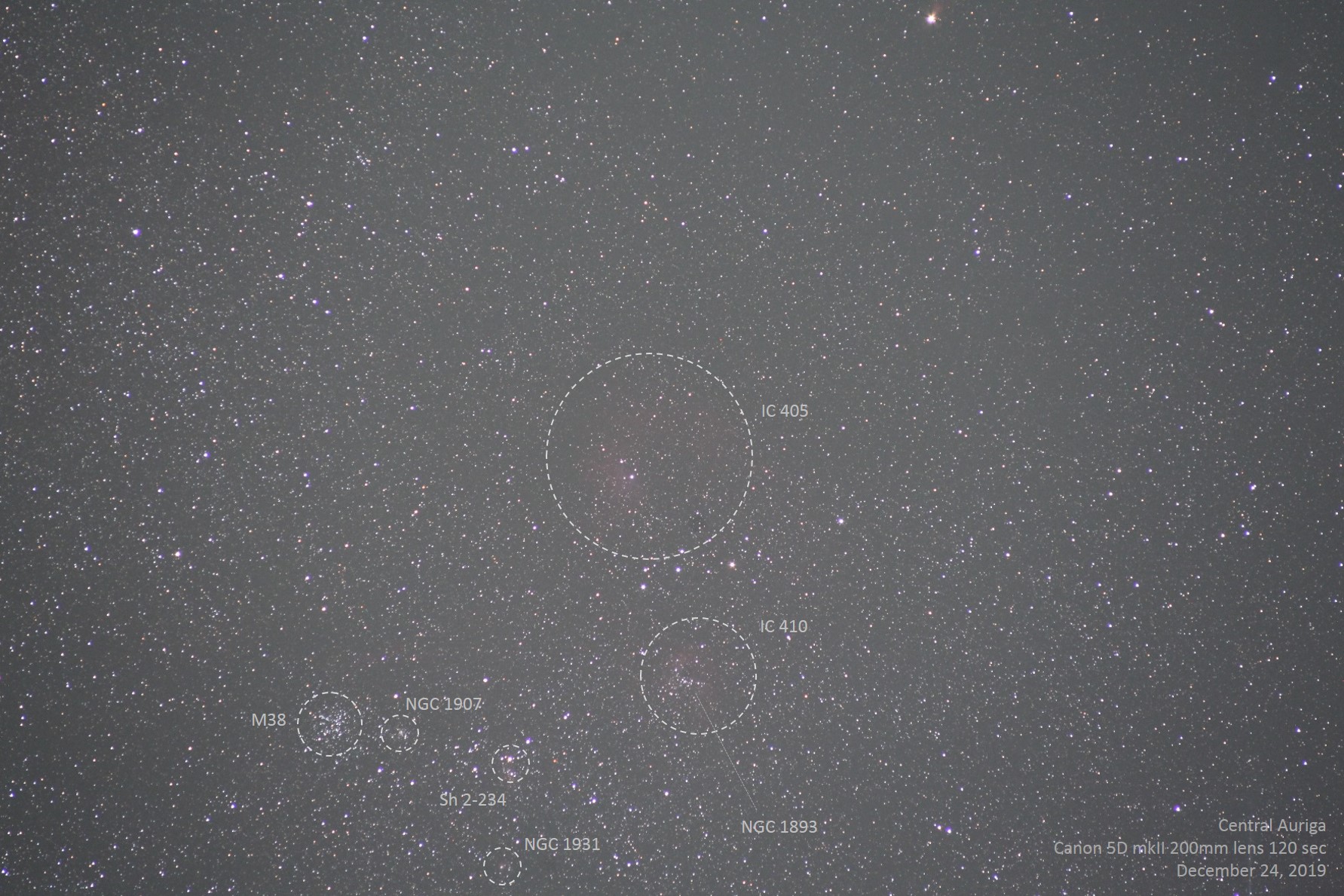 |
I didn't compose this shot very well but did manage to capture some of the
nebuloisty in central Auriga with my modified Canon 5D. Deep images
of the area reveal that the entire region is awash in emission nebulosity.
My image was taken just before midnight on December 24, 2019. I'm definitely
going to try this area again from a darker location.
|
 |
Triangulum is not a constellation I've imaged before, but I love the little
arc of three stars at the lower left corner of the triangle, so I wanted to try
it this evening. For the first time, I also noticed the curious little
trapezoid directly below the mid-point of Triangulum. It's made up of two
bright stars and two fainter ones, each pair at opposite corners of the trapezoid.
Note the very ruddy star just to the right of the open
cluster NGC 752 sitting at the end of the golf club; according to my planetarium
software, that star is magnitude 5.89 and of spectral class K5III, so no surprise
that it looks reddish!
|
 |
The southern fish on display early one late November evening; they've got Fomalhaut
but otherwise they are not as interesting as their northern finfriends. I read that
Fomalhaut was recently discovered
to be a triple system, which surprised me since I didn't know it was a multiple star
to begin with. It turns out the first companion discovered is several degrees to
the south, so I annotated it on the image. It makes a nice little pair with an
unrelated star of about the same brightness.
|



















